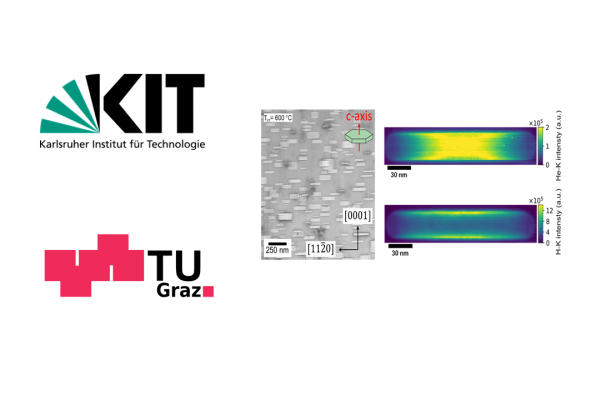TA Success Stories: Understanding of tritium trapping mechanisms in high dose neutron irradiated beryllium using EELS (TRIBE 1 & 2) from the Karlsruhe Institute of Technology to FELMI-ZFE

Many successful projects stem from transnational access provided by ESTEEM3. This week, we focus on the “Understanding of tritium trapping mechanisms in high dose neutron irradiated beryllium using EELS” project from Karlsruhe Institute of Technology, which was granted access to the Institute of Electron Microscopy and Nanoanalysis of the TU Graz (FEMLI) & Graz Centre for Electron Microscopy (ZFE), one of the ESTEEM3 TA provider.
Introduction
The "Understading of tritium trapping mechanisms in high dose neutron irradiated beryllium using EELS" proposed by Nikolai Zimber from the Karlsruhe Institute of Technology (Germany), focused on development of materials for fusion reactors.
The project was granted access to facilities and expertise of the FELMI-ZFE (Austria) in Summer 2019 and Winter 2020 as part of the transnational access campaign of ESTEEM3.
The TRIBE 1 and 2 projects
Beryllium is considered as a plasma-facing component and as an effective neutron multiplier in future fusion reactors. Large amounts of helium and tritium will be generated by neutron-induced transmutation within the material. As it is well known, these two transmutants form gas bubbles together with vacancies. Evaluation of a four year long neutron irradiation campaign revealed a strong retention behaviour of the radioactive gas tritium. Even at elevated temperatures of up to 650 °C large amounts of the theoretically produced tritium content remained trapped in the material. With our project we wanted to elucidate where and above all why tritium is trapped within beryllium.
Main results
Using a combination of STEM imaging, and high resolution, monochromated in-situ EELS we were able to locally detect hydrogen within nanoscaled hexoganal-prismatic shaped helium bubbles. In particular our investigations showed that hydrogen is strongly trapped at the (0001) Be surfaces and can only desorb from the bubble walls at T ≥ 400 °C if the helium content is reduced by opening the bubbles prior to the heating procedure. Mapping the hydrogen desorption from metal surfaces and the conclusions from our work significantly deepens the general understanding of metal-hydrogen bonding.
Successful outcomes
Presentations at Conferences :
- International Conference on Fusion Reactor Materials (2019 & 2021)
- Symposium on Fusion Technology (2020 & 2022)
Publications :
- Communications Chemistry (under review)
Interested in Transnational Access to the leading European state-of-the-art Transmission Electron Microscopy (TEM)? Find out more about the procedure here!
